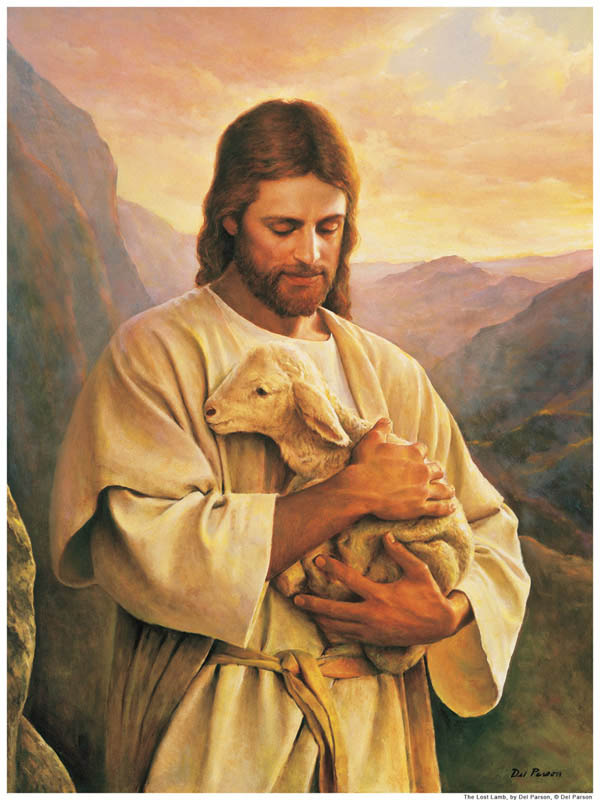In the early days of the church, Mormons practiced polygamy. That practice ended more than one hundred years ago. Today, anyone who practices polygamy is excommunicated, so the polygamists in the news in modern times are not Mormons.
Mormon is a nickname for members of The Church of Jesus Christ of Latter-day Saints. While it is acceptable to use it to describe the people, it is not appropriate to use the term Mormon as the name of the church. Mormons abbreviate their name by using the initials LDS.
 The practice of polygamy in the 1800s was very different from the polygamy we see practiced by apostate groups today. It was a practice which gave women a great deal of control and power, which is why the women who practiced it were so aggravated by the claims of outsiders who had never even been to Utah that the women were suffering. Eliza R. Snow, who was the polygamist wife of Brigham Young, said at a conference on women’s rights:
The practice of polygamy in the 1800s was very different from the polygamy we see practiced by apostate groups today. It was a practice which gave women a great deal of control and power, which is why the women who practiced it were so aggravated by the claims of outsiders who had never even been to Utah that the women were suffering. Eliza R. Snow, who was the polygamist wife of Brigham Young, said at a conference on women’s rights:
“Our enemies pretend that, in Utah, woman is held in a state of vassalage—that she does not act from choice, but by coercion. What nonsense!
“I will now ask of this assemblage of intelligent ladies, Do you know of any place on the face of the earth, where woman has more liberty and where she enjoys such high and glorious privileges as she does here as a Latter-day Saint? No! the very idea of a woman here in a state of slavery is a burlesque on good common sense … as women of God, filling high and responsible positions, performing sacred duties—women who stand not as dictators, but as counselors to their husbands, and who, in the purest, noblest sense of refined womanhood, are truly their helpmates—we not only speak because we have the right, but justice and humanity demands we should!” (See Jaynann Morgan Payne, “Eliza R. Snow: First Lady of the Pioneers,” Ensign, September 1973.)
Women had the most control over the practice of polygamy in pioneer Utah. In many families, it was the wife who encouraged the husband to take on an additional wife after praying, but regardless of who first made the decision, the wife was in control. The husband had to ask for and receive her permission to take on other wives and had to approve his selection with her. In addition, the women he wished to marry was free to accept or reject the proposal. Unlike some groups today, marriages were not assigned by the church and no one was required to participate in polygamy in order to get into Heaven or for any other reason. It was, in fact, a minority practice. About a third of the married women were in these relationships and about a third of those women had been previously married. The majority of families had only two wives.
After receiving permission from his wife, a man had to seek church approval. He had to demonstrate he could properly care for a larger family and that he had his first wife’s permission. Women considering becoming a second or later wife had the advantage of already knowing if the man was a good husband.
Although Mormons did not generally approve of divorce, if a woman entered into a plural marriage and then realized she was uncomfortable and could not adjust, she was granted a divorce. Men, however, having initiated the marriage, were instructed to go home and work harder on their marriages.
Women, then held the control in these relationships. Many women entered into plural marriage because the Holy Ghost told them it was what God wanted. Others liked the freedom it provided. Brigham Young had what today would be considered liberal views about women’s roles. Women in Mormon communities had full civil rights, including the right to vote. This was taken from them by the federal government when Utah became a state, which angered the women. They had lived for many years with full rights and unusual opportunities. Brigham Young said:
As I have often told my sisters in the Female Relief Societies, we have sisters here who, if they had the privilege of studying, would make just as good mathematicians or accountants as any man; and we think they ought to have the privilege to study these branches of knowledge that they may develop the powers with which they are endowed. We believe that women are useful not only to sweep houses, wash dishes, make beds, and raise babies, but that they should stand behind the counter, study law or physic [medicine], or become good book-keepers and be able to do the business in any counting house, and this to enlarge their sphere of usefulness for the benefit of society at large (DBY, 216–17). (Brigham Young, Teachings of the Presidents of the Church: Brigham Young.)
He personally encouraged specific women to train for careers traditionally left to men and there were female doctors among their people. One was Martha Ballard, one of six wives to her husband, who also became the first female state senator after winning an election in which her own husband was her competitor. When women’s rights were removed by the government, the official women’s auxiliary, the Relief Society, became the center of the women’s rights movement for the state and many of the women traveled east to work with Susan B. Anthony and other leaders.
Prior to this time, Brigham Young told women that if there were sufficient women in the family willing to care for the home and children, the other wives should feel free to return to school or take up careers. This was a rare invitation in those days and probably helped to make plural marriage more appealing. Since the church at that time sent married men on missions lasting several years (this is not done today unless his wife is also serving), it provided the wives with companionship and assistance with the intense work of a home and business.
Mormons believe polygamy is only permitted when practiced under specific revelation from God. It was practiced even by prophets in Biblical times, but only when commanded. Today there is no purpose for it, and so it is no longer practiced, even in countries where it is legal.





